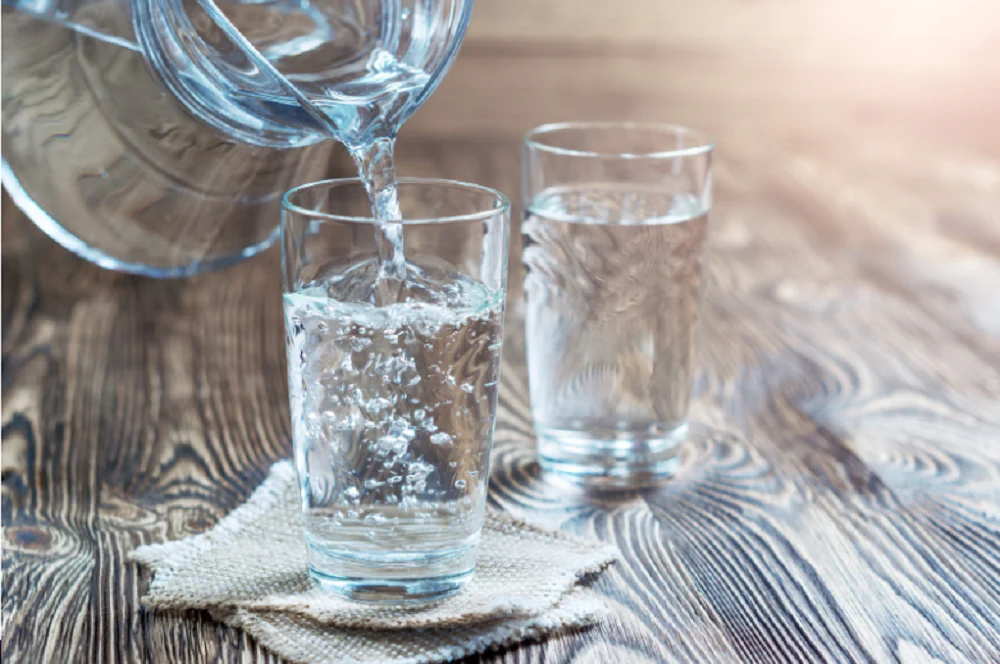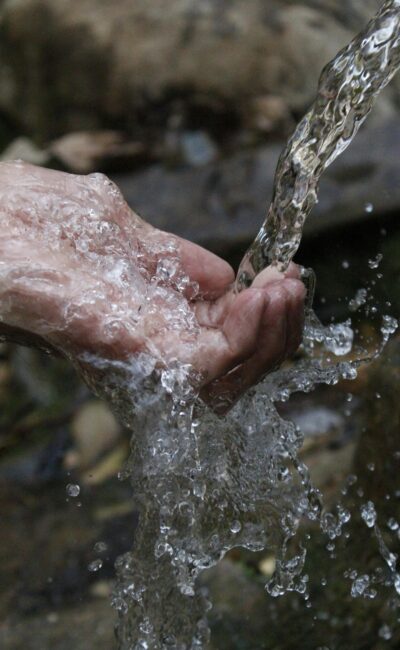There are several signs that indicate whether your tap water is contaminated or not and one of them is the smell. Does your sink water smell bad, like the odor of rotten eggs, chlorine, or chemicals? Any of these may mean there are contaminants present that can be harmful to your health and don’t make the water taste very good.
Although states are required to follow minimum regulations set forth by the U.S. Environmental Protection Agency (EPA), there may be instances where the limits are exceeded. This is more common when groundwater sources are found near agricultural and industrial runoff where chemicals and nitrates are used on a regular basis for pesticides. However, the smell can also stem from outdated pipes, faulty filtration, and a range of other factors.
A bad smell doesn’t necessarily mean it’s bad for you to drink, although it’s likely an indicator of a larger problem. Before you drink the tap water, find out what causes the smell, what you can do to improve or fix it, and alternatives available for clean drinking water.
What Causes The Smell?
Does your water smell bad like sewage? This could be caused by the presence of bacteria that come from food, old soap, or other materials sitting in your drain. Older homes with faulty pipe systems may not fully clear out the drain every time, leaving unpleasant odor buildup behind.
The smell may also stem from gases or chemicals in the water like hydrogen sulfide or chlorine. Hydrogen sulfide is the rotten egg odor that may be naturally present in the groundwater. This occurs most commonly in regions where there’s decay in the surrounding plants and rocks or when sulfur bacteria is formed by wells, plumbing systems, or water heaters. High levels of hydrogen sulfide are harmful. In addition to the unpleasant odor, it can be detected by pipe corrosion or if you begin to notice black stains on your plumbing fixtures or silverware.
Alternatively a distinctive chlorine smell may indicate too much has been added as a way to sanitize the water system. Public water supplies use chlorination to disinfect tap water and kill germs by adding small amounts of chlorine. The Centers for Disease Control and Prevention (CDC) identifies a safe chlorine level as up to four milligrams per liter of water. At this rate, it’s not deemed harmful to your health when consuming.
The source of your tap water may be a third cause of certain odors. Do you notice a moldy or fishy smell odor? It could be due to bacteria growing in the drain or as a result from plants, animals, or bacteria naturally found in lakes or reservoirs where your water is sourced from. A saltwater smell when you live near the coast could be caused from seawater spilling into the freshwater supply. Since high levels of sodium may be harmful to your health, you’ll want to check with your local health agency to confirm levels or any potential risks.
There are a multitude of other contaminants, chemicals, and other pollutants that can end up in your tap water and cause it to smell bad. When it becomes overwhelming, there may be a chance there’s more of them present in the water than what’s allowed by federal or state regulations. If this is the case, there are ways to clean your water pipes and confirm the safety limits of your water supply.
What Causes Cloudy Water?
In addition to the things that can make water smell bad, take into account how it looks as well. Even if your tap water doesn’t have a noticeably bad odor, it may not run clear, which could indicate a problem. Cloudy water can be caused by something in the main water line, pipe corrosion, or both.
Green- or blue-tinged water is often caused by the corrosion of copper pipes. When this occurs, you could be exposed to both copper or lead, which can lead to several harmful side effects. Muddy-looking water is often caused by manganese found in the water or sediment from the pipes. When this happens, flush all toilets and cold-water faucets to see if the water runs clear. Wait for one hour and then flush them all again. If it still remains the same color, contact your water provider.
Iron rust can also get into the water and cause it to turn red or yellowish. While this is not deemed harmful to your health, it can stain your clothes. Plus, it likely won’t make you quick to drink it. The bottom line is if your water does not smell or look right, you’ll want to know where the problem is coming from and if it can be fixed.
If it’s part of your home’s pipes, it could possibly be updated by a licensed plumber. However, if it’s a result of the city’s structure or the water itself, there’s little you can do to change it. You can contact your local officials to determine what’s causing the color or smell, but it may be a problem they cannot or will not make changes to.
Identifying the Source
If you’re noticing a funky smell coming from your tap, determine if it’s the pipes or the water itself. Fill a glass of water and take it away from your sink before smelling it. If it doesn’t have an odor, it’s likely your pipes are the culprit. Or, leftover food can be lingering near the drain. Make sure to thoroughly clear out your disposal. A natural way to deodorize your sink is to cut a wedge of a lemon or lime and toss in the sink. Turn on the faucet and start your garbage disposal. Check to see if that removes the lingering odor.
Bacteria growing in your drain or the presence of hydrogen sulfide may cause the sulfur smell or rotten egg odor. In some instances, the hot water heater could be the culprit, as there’s an element in the design to protect it from corrosion. With deterioration, it can cause an unpleasant smell. A licensed plumber can assess the odor problem and let you know if it’s the water heater, pipes, or if the smell is coming from your water.
If your tap water is the source of the smell, check with your local water system administrator regarding excessive levels of chemicals or pollutants. They’re supposed to notify the public when contamination levels are in excess of what’s required, but you may want to have your water checked again. Even though it may not be harmful for you to drink, instinctually, you’re not likely to want to drink it. Your best option is to drink filtered water instead.
Drinking Cleaner Water
Drinking cleaner water is made easier by installing a filtration system in your home. It’s less costly and more eco-friendly than continually stocking up on single-use water bottles to keep you and your family hydrated. An at-home water filtration system removes the majority of pollutants, chemicals, and toxins found in tap water.
The FloWater Refill Station in particular removes up to 99 percent of all contaminants by transforming the water that flows from your sink into a great-tasting, purified water source. It tastes, looks, and smells fresh and clean. The coconut carbon finish gives it a refreshing, crisp taste, which makes it enjoyable to drink on a regular basis.
The filtration process purifies the water by passing it through seven stages of purification and improvement. The first three phases are focused specifically on removing heavy metals, pesticides, nitrates, chemicals, and other elements that affect the look, taste, and quality of the water. After it’s been thoroughly filtered, minerals and electrolytes are added back to the water to elevate its health benefits and quality.
Not everything that’s found in tap water is bad for you, but there’s no way for a filtration system to determine what should stay and what should go. Maintain a healthy level of hydration with water that you’ll actually want to drink rather than avoiding what comes out of the tap.
How the FloWater Filtration System Works
By using the water that’s available in your tap, the FloWater Refill Station purifies it and makes it available on-demand. Seven gallons of fresh, chilled drinking water are ready at all times to meet the needs of your household or company. The one-touch fill and recessed nozzle keeps contact to a minimum and reduces the buildup of grime and germs. Now, there’s the option of a foot pedal as part of the newest touchless design to get your refills hands-free.
The dispensing area fits any size of water container, whether you want to use it to make coffee or fill up a gallon jug to quench your thirst throughout the day. It takes only nine seconds to fill a 24-ounce bottle with water that is chilled to an optimal 42 degrees every time. It’s crisp, delicious, and free of all unpleasant water odors and tastes. Stay hydrated without worrying about why your water smells bad with the help of a filtration system that delivers fresh, clean water.




